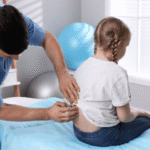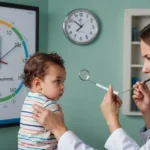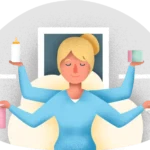As adolescents navigate academic pressures and emotional development, ADHD symptoms can significantly impact their daily functioning and long-term success. The teenage years bring heightened academic demands and increased independence expectations. For adolescents with ADHD, these changes can intensify existing difficulties while introducing new challenges. Parents who recognize the signs and understand available treatment options can provide meaningful support during this pivotal developmental stage.
What Is ADHD?
Attention-Deficit/Hyperactivity Disorder is a neurodevelopmental condition characterized by persistent patterns of inattention, hyperactivity, and impulsivity that interfere with daily functioning. The disorder affects brain areas responsible for executive functions, including attention regulation, impulse control, and organization. ADHD manifests in three primary presentations. The predominantly inattentive presentation involves difficulties with focus, organization, and task completion. Individuals may appear forgetful, easily distracted, or prone to losing belongings. The predominantly hyperactive-impulsive presentation includes excessive movement, fidgeting, and difficulty waiting for turns. The combined presentation features symptoms from both categories.
What Are the Signs?
ADHD symptoms in teenagers can differ from childhood presentations, as hyperactivity may become less obvious while attention difficulties may intensify. Teens may struggle to complete assignments, forget deadlines, or have difficulty studying independently. Inattentive symptoms include trouble focusing during conversations, lectures, or reading assignments. Teenagers may appear to listen but fail to follow through on instructions or forget recently learned information. They often lose school supplies, textbooks, or assignments and struggle to organize their time and belongings effectively.
Hyperactivity symptoms may manifest as inner restlessness rather than obvious physical movement. Teens might feel constantly “on the go,” interrupt conversations, or struggle to engage in quiet activities. They may talk excessively, have difficulty waiting their turn, or make hasty decisions without thinking through consequences.
Impulsivity can lead to risky behaviors or social conflicts. Teenagers might act without thinking about safety or make decisions that jeopardize their future goals. These behaviors may strain relationships with peers, family members, and teachers. Emotional regulation difficulties frequently accompany ADHD symptoms. Low self-esteem can develop when repeated challenges affect academic performance or social relationships.
How Is It Treated?
Effective ADHD treatment typically involves a multimodal approach combining behavioral interventions and sometimes medication. Treatment plans should be individualized based on symptom severity and functional impairment. Behavioral interventions teach practical skills for managing ADHD symptoms. Cognitive-behavioral therapy helps teenagers develop organizational strategies, time management techniques, and problem-solving skills. Family therapy can improve communication patterns and help parents learn effective behavior management strategies.
Medication can effectively reduce core ADHD symptoms in many individuals. Stimulant medications work by increasing activity in brain areas responsible for attention and impulse control. Non-stimulant options are available for those who don’t respond well to stimulants or experience problematic side effects. Lifestyle modifications may support overall treatment effectiveness. Regular exercise, adequate sleep, and structured routines can help manage symptoms naturally.
Seek Professional Medical Care
ADHD diagnosis and treatment require professional medical evaluation and ongoing monitoring. Early intervention and appropriate treatment significantly improve outcomes for teenagers with ADHD. Parents who suspect their teenager may have ADHD should consult qualified healthcare professionals to explore evaluation and treatment options that can help their child.










